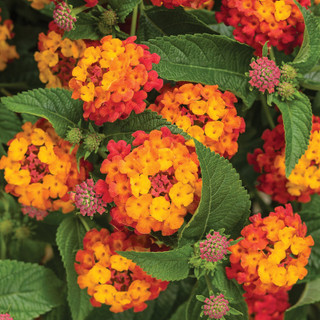
Bluebeard
Uses:
- Wildlife Gardens
- Garden Borders
- Container Gardens
Features:
- Drought & Heat Tolerant
- Deer Resistant
- Attracts Pollinators
Sunlight:
- Full Sun
- 6+ Hours of Direct Sun
Growing Zones:
- 5-9
- What is My Zone?
Bluebeard, Caryopteris, is a drought tolerant shrub that attracts bees, butterflies & hummingbirds. The leaves have a nice sage-like scent, and often contrast from the flowers to create a beautiful combination.
Why Buy Bluebeard Online
Bluebeard (Caryopteris) bursts with color in mid to late spring and thrills butterflies and bees. Also called blue mist and blue mist spirea, bluebeard plants are part of the mint (Lamiaceae) family, but are unlike spirea and mint plants. This shrub is drought tolerant and has pretty, sage-like pale green leaves. The leaves drop in winter (it is deciduous) but begin emerging in late spring or early summer.
About Bluebeard

Blue Mist Shrub, Blue Spirea
East Asia (China, Japan, Korea)
Bushes
Deciduous
5 - 9
Blue, Violet-Blue
Late Summer to Early Fall
Upright, Mounded
Bees, Butterflies, Hummingbirds
Drought (once established), Heat
Deer, Rabbits
How To Use Bluebeard In The Garden
Bluebeard, also known as Caryopteris, is a compact shrub that reaches about 2 to 3 feet in height and width. It features silvery-green leaves with a light eucalyptus scent when rubbed. In late summer and early fall, the plant produces clusters of small, fragrant blue flowers, attracting butterflies and bees to the garden. The flowers transition to brown seed heads that provide winter interest.
Bluebeard offers late-season color in beds and mixed borders. It's also suitable for enhancing butterfly gardens or low hedges. This tough shrub tolerates drought once established and is a good pick for xeriscaping or low-water plantings. Pruning back in early spring encourages dense, new growth and abundant flowering.
Bluebeard Care
Bluebeard (Caryopteris) thrives in well-drained soil and full sun, receiving at least six hours of sunlight daily. During the first year, water regularly, allowing the soil to dry slightly between waterings; once established, the shrub exhibits drought tolerance, requiring minimal supplemental watering. This shrub thrives in lean conditions and requires little, if any, fertilizer.
Prune Bluebeard in early spring as new growth emerges, cutting branches back to 12 to 18 inches to promote vigorous blooming. While deadheading isn't necessary, removing spent flowers can enhance the plant's appearance and prevent self-seeding. For container cultivation, select pots with adequate drainage and ensure they receive sufficient sunlight. During winter, move containers to a cool, sheltered location and reduce watering to allow the plant to enter dormancy.
Learn More About Bluebeard Care

Bluebeard Companion Plants
Plants that go well with bluebeard are tough and heat loving perennials, annuals and shrubs. A few of our favorite plants go grow with bluebeard are lantana, salvia, sedum, coneflowers and black-eyed susans.










